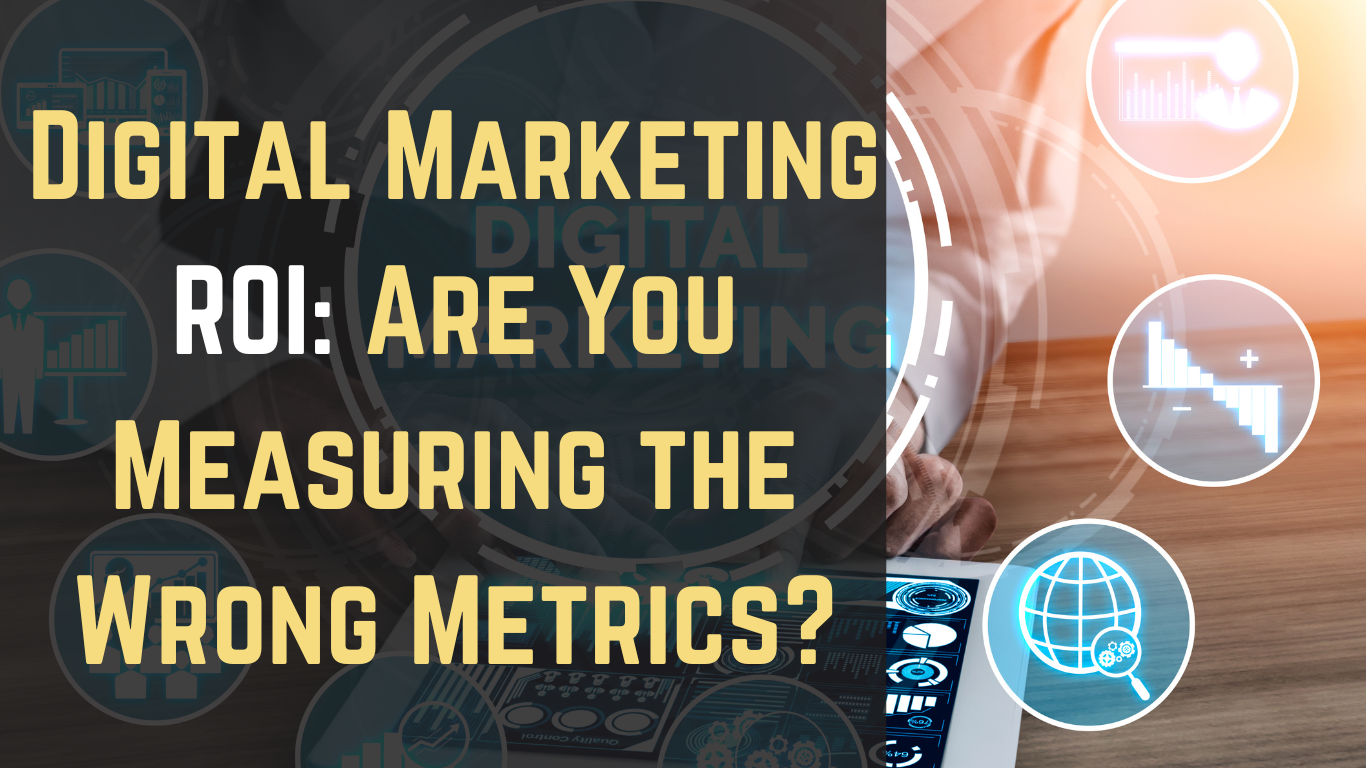Digital Marketing ROI: Are You Measuring the Wrong Metrics?
Published in Business by EA Target ICT
Many businesses pour money into digital marketing campaigns while tracking metrics that don’t actually reflect real marketing ROI. You might see impressive “likes,” “clicks,” or even “traffic growth,” but if these numbers aren’t translating into sales or customer retention, you could be optimising for the wrong outcomes.
The truth is, common metrics like social media engagement or email open rates often distract from what really matters measuring digital marketing ROI in terms of revenue generated, customer lifetime value, and cost per acquisition. A campaign might get 10,000 clicks but convert only five customers, while another with 1,000 clicks converts fifty. Without understanding which metrics truly impact your bottom line, you risk wasting budget on activities that look successful but don’t drive growth.
In this guide, we’ll explore why many businesses measure the wrong digital marketing KPIs, which metrics actually matter for different business models, and how to align your reporting with real financial outcomes.
Why Vanity Metrics Mislead Businesses
It’s easy to celebrate a viral post or a spike in website visits, but these vanity metrics often create a false sense of success. For example, a B2B company might invest heavily in LinkedIn ads that generate hundreds of clicks—but if none of those visitors fill out a contact form or request a demo, the campaign hasn’t actually contributed to ROI.
The problem isn’t that engagement metrics are useless—it’s that they’re frequently misinterpreted as goals rather than steps in a larger customer journey. A high open rate on emails means nothing if subscribers aren’t taking the next step, whether that’s making a purchase, booking a consultation, or downloading a lead magnet.
To fix this, businesses need to shift their focus from activity metrics (likes, shares, impressions) to outcome metrics (conversions, revenue per lead, customer retention). Tools like Google Analytics and HubSpot’s CRM can help bridge this gap by tracking user behaviour beyond the first click.
The Right Metrics for Different Business Models
Not all businesses should measure ROI the same way. An e-commerce store’s success metrics differ drastically from a B2B consultancy’s, and failing to recognise this leads to misguided strategies.
For e-commerce businesses, the most critical metric is return on ad spend (ROAS) the revenue generated for every pound spent on ads. A ROAS of 3:1 means £3 in sales for every £1 spent, which is great for low-margin products but unsustainable for high-ticket items where the break-even point might be 5:1. Tracking average order value (AOV) alongside ROAS ensures you’re not just driving sales, but profitable ones.
Service-based businesses, on the other hand, should prioritise cost per lead (CPL) and lead-to-customer conversion rate. A law firm spending £50 per lead might seem efficient but if only 5% of those leads become paying clients, the real customer acquisition cost is £1,000. Improving lead quality (through better targeting or landing page optimisation) often matters more than reducing CPL.
Subscription models need to focus on customer lifetime value (LTV) and churn rate. A streaming service might spend £100 to acquire a subscriber, which seems high unless that customer stays for three years, generating £300 in revenue. Reducing churn by just 5% can increase LTV by 25-30%, dramatically improving long-term ROI.
Common Tracking Mistakes That Skew ROI
Even businesses tracking the right KPIs often make errors in attribution—assigning credit to the correct marketing channels. The last-click model, which gives all credit to the final touchpoint before conversion, ignores the role of brand awareness campaigns, email nurturing, and organic search.
For example, a customer might:
- See a Facebook ad (no click)
- Later search for your brand on Google
- Click a paid search ad and convert
If you only track the last click, you’d credit Google Ads entirely even though Facebook played a crucial role. Multi-touch attribution tools like Google Analytics 4 or Adobe Analytics provide a more accurate picture by weighing each interaction in the customer journey.
Another mistake is failing to track offline conversions. A local restaurant might run Google Ads for dinner reservations, but if most bookings happen by phone, the reported ROI will seem worse than reality. Call tracking solutions like CallRail link phone conversions back to digital campaigns, closing this measurement gap.
How to Align Marketing Spend With Real Business Outcomes
Improving digital marketing ROI measurement starts with connecting marketing data to financial results. These steps help ensure you’re optimising for true business impact:
- Define primary and secondary KPIs based on your revenue model (e.g., ROAS for e-commerce, CPL for services).
- Implement proper tracking UTM parameters, conversion pixels, and CRM integration to capture the full customer journey.
- Analyse incrementality by comparing conversions from marketing efforts to a control group (e.g., pausing ads in some regions to see the true lift they provide).
- Regularly audit attribution models to ensure credit isn’t being misassigned to less impactful channels.
When to Rethink Your Entire Strategy
Sometimes, improving ROI isn’t about better measurement it’s about changing the strategy altogether. Warning signs include:
- Consistently high CPL with low conversion rates, suggesting targeting or messaging issues
- Declining LTV despite acquisition growth, indicating poor customer fit
- “Successful” campaigns that don’t move revenue, meaning you’re optimising for the wrong actions
In these cases, incremental tweaks won’t help. A full campaign repositioning, audience reassessment, or even platform shift (e.g., from Facebook to LinkedIn for B2B) may be needed.
Measuring digital marketing ROI effectively requires looking beyond surface-level metrics to understand what truly drives business growth.
For more insights, visit targetict.co.uk.

